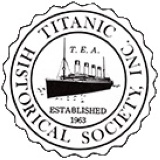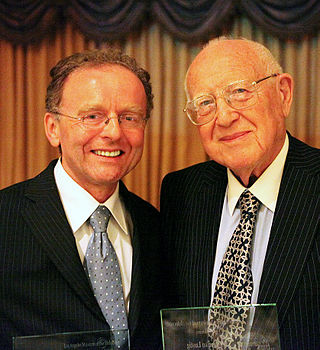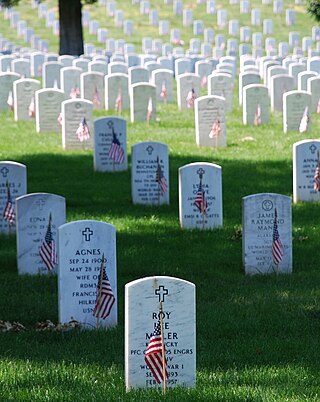A souvenir , memento, keepsake, or token of remembrance is an object a person acquires for the memories the owner associates with it. A souvenir can be any object that can be collected or purchased and transported home by the traveler as a memento of a visit. The object itself may have intrinsic value, or be a symbol of experience. Without the owner's input, the symbolic meaning is lost and cannot be articulated.

The Canadian Multiculturalism Act is a law of Canada, passed in 1988, that aims to preserve and enhance cultural diversity, i.e. multiculturalism, in Canada.

The Titanic Historical Society, Inc. (THS) is a non-profit organization founded on July 7, 1963, whose purpose is the preservation of the history of the famous ocean liner RMS Titanic, which sank in 1912, in one of the greatest maritime disasters in history.

Gedenkdienst is the concept of facing and taking responsibility for the darkest chapters of one's own country's history while ideally being financially supported by one's own country's government to do so.

The Montreal Holocaust Museum is a museum located in Montreal, Quebec, Canada. It is dedicated to educating people of all ages and backgrounds about the Holocaust, while sensitizing the public to the universal perils of antisemitism, racism, hate and indifference. Through the museum, its commemorative programs and educational initiatives, it aims to promote respect for diversity and the sanctity of human life. The Museum was founded in 1979 as the Montreal Holocaust Memorial Centre and is Canada's first and only recognized Holocaust museum.

The Holocaust Museum Houston is located in Houston's Museum District, in Texas. It is the fourth largest holocaust museum in the U.S. It was opened in 1996.

A replica is an exact copy or remake of an object, made out of the same raw materials, whether a molecule, a work of art, or a commercial product. The term is also used for copies that closely resemble the original, without claiming to be identical. Copies or reproductions of documents, books, manuscripts, maps or art prints are called facsimiles.
The Vienna Declaration and Programme of Action (VDPA) is a human rights declaration adopted by consensus at the World Conference on Human Rights on 25 June 1993 in Vienna, Austria. The position of United Nations High Commissioner for Human Rights was recommended by this Declaration and subsequently created by General Assembly Resolution 48/141.

The Canadian Museum for Human Rights is a Canadian Crown corporation and national museum located in Winnipeg, Manitoba, adjacent to The Forks. The purpose of the museum is to "explore the subject of human rights with a special but not exclusive reference to Canada, to enhance the public's understanding of human rights, to promote respect for others and to encourage reflection and dialogue."

The International Holocaust Remembrance Day, or the International Day in Memory of the Victims of the Holocaust, is an international memorial day on 27 January that commemorates the victims of the Holocaust, which resulted in the genocide of one third of the Jewish people, along with countless members of other minorities by Nazi Germany between 1933 and 1945, an attempt to implement its "final solution" to the Jewish question. 27 January was chosen to commemorate the date when the Auschwitz concentration camp was liberated by the Red Army in 1945.
The following outline is provided as an overview of and topical guide to the human self:

An archaeology museum is a museum that specializes in the display of archaeological artifacts.

Museo Francisco "Pancho" Coímbre is a sports museum in Ponce, Puerto Rico. Inaugurated on 21 January 1992, it is Puerto Rico's first sports museum.

The Documentation and Cultural Centre of German Sinti and Roma was established in Heidelberg, Germany, in the early 1990s, as a memorial to Sinti and Roma people who were killed by the National Socialists Party. After several years of extension work collecting stories from the victims, conducting research, and conversion, the building complex was ceremonially opened to the public on 16 March 1997, and was supported by the attendance of many Roma and Sinti survivors. It is the world's first permanent exhibition on the genocide perpetrated upon the Sinti and Roma by the Nazis. The documentation Centre has three levels and covers an area of almost 700 square meters, and traces the history and stories of the persecution of the Sinti and Roma under National Socialism. The institution is overseen by Central Council of German Sinti and Roma, supported by the city of Heidelberg, and is the beneficiary of special funds from the German Federal Government and the land of Baden-Württemberg.

The Jim Crow Museum of Racist Memorabilia at Ferris State University, Big Rapids, Michigan, displays a wide variety of everyday artifacts depicting the history of racist portrayals of African Americans in American popular culture. The mission of the Jim Crow Museum is to use objects of intolerance to teach tolerance and promote social justice.

The Slave Route Project is a UNESCO initiative that was officially launched in 1994 in Ouidah, Benin. It is rooted in the mandate of the organization, which believes that ignorance or concealment of major historical events constitutes an obstacle to mutual understanding, reconciliation and cooperation among peoples. The project breaks the silence surrounding the slave trade and slavery that has affected all continents and caused great upheavals that have shaped our modern societies. In studying the causes, the modalities and the consequences of slavery and the slave trade, the project seeks to enhance the understanding of diverse histories and heritages stemming from this global tragedy.

The commemoration of the American Civil War is based on the memories of the Civil War that Americans have shaped according to their political, social and cultural circumstances and needs, starting with the Gettysburg Address and the dedication of the Gettysburg cemetery in 1863. Confederates, both veterans and women, were especially active in forging the myth of the Lost Cause of the Confederacy.

A biographical museum is a museum dedicated to displaying items relating to the life of a single person or group of people, and it may also display the items collected by their subjects during their lifetimes. Some biographical museums are located in a house or other site associated with the lives of their subjects, such as Casa Paoli Museum. Other examples of house-based biographical museums are Anne Frank House in Amsterdam, Quinta de Bolívar in Bogotá, Colombia, the Keats-Shelley Memorial House in Rome, Italy, and the Gjergj Kastrioti Skënderbeu National Museum in Krujë, Albania.

Museo Parque de Bombas is a museum located inside the historic Parque de Bombas in the Ponce Historic Zone in Ponce, Puerto Rico.

A cemetery museum is a graveyard where the cemetery itself is the museum. As most other types of museums its purpose is to educate the visitor, in this case, in the history of the cemetery and/or the people interred in it. It does this by raising public interest in the cemetery, exposing the role it may have played at some point in history, and promoting the history behind it. They are generally cemeteries that have become tourist attractions. Given their nature, cemetery museums fall under the broader category of open air museums.

















